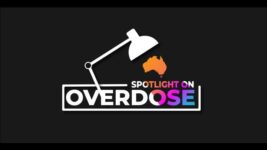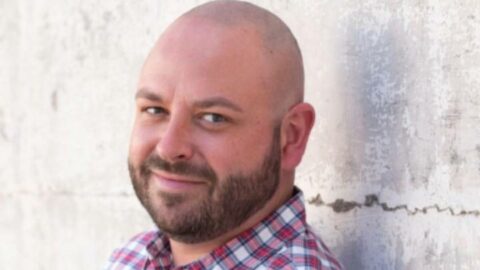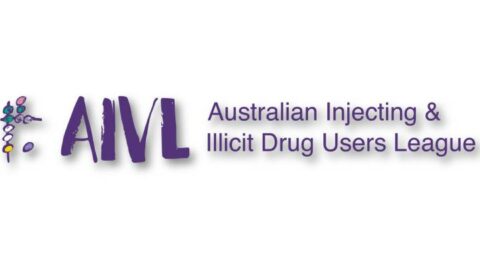Spotlight on Overdose: An Interview With AIVL CEO Jake Docker

Despite being an abject failure from its inception, the war on drugs continues and its casualties are mounting. Although its victims are not illicit substances, and nor are they those who profiteer from their manufacture or trafficking.
Those who’ve primarily been harmed – often lethally – by drug prohibition are people who use drugs.
If anything has been learnt by a century of outlawing psychoactive substances and the fifty years of the beefed-up drug war, it’s that, while it’s all apparently been about saving lives, it actually takes them.
Indeed, over the last two decades, more than 35,000 Australians have died due to drug overdose. This constitutes about five people lost every day. And despite the drug war propaganda, these deaths have been entirely preventable.
So, right now, the national peak organisation representing peer-based drug user organisations, AIVL, is shining a light on this issue, which, sadly, doesn’t get the attention other social crises warrant, due to the stigma, the misinformation and the secrecy surrounding these substances.
A national overdose strategy
AIVL launched Spotlight on Overdose in mid-December, noting that the overdose crisis has been overshadowed by the COVID-19 pandemic since March 2020. However, in truth, drug-related deaths have been pushed to the periphery for decades now.
A major reason for this shunning is that as soon as harm reduction advocates raise the subject of implementing approaches that would improve the lot of people who use drugs, they’re shot down by conservative politicians who consider a “tough on drugs” stance will keep them in office.
But harm reduction strategies save lives. Pill testing, or more precisely drug checking, gives people an awareness of the content of their drugs to ensure they don’t prove fatal. And the evidence shows it actually reduces substance use, rather than promotes it.
Drug checking is just one in a series of harm reduction interventions that keep people alive.
The Spotlight on Overdose campaign aims to reawaken the public discourse on drug-related deaths and their prevention.
Ultimately, AIVL’s calling for a National Overdose Strategy, with policies and educative programs that serve to save the lives of people who use drugs, who, more often than not, are young people.
Ending prohibition
The tide is turning on drug prohibition globally. In the town where AIVL is situated, Canberra, cannabis use has been legalised, two government-sanctioned pill testing trials have occurred, a fixed testing site is in the works, and drug decriminalisation legislation is before parliament.
Established as a legal entity in 1992, AIVL (the Australian Injecting and Illicit Drug Users League) has been providing a voice for people who use drugs for over three decades, calling for the upholding of their human rights, autonomy over their own bodies, and the respect they’re warranted.
Sydney Criminal Lawyers spoke to AIVL chief executive Jake Docker about the lack of attention the overdose crisis is receiving at present, why the “just say no” approach to drugs has never worked, and how greater openness and awareness about drugs currently deemed illegal will save lives.
AIVL launched Spotlight on Overdose in mid-December. The campaign aims to shine a light on continuing drug-related deaths in this country, which claim roughly five lives a day.
You’ve highlighted that in 2020, 1,842 Australians died as a result of an overdose, while over the last twenty years, 35,000 people have lost their lives in drug-related circumstances. These figures are shocking, yet little known.
So, Jake, why is the drug-related death toll so high in this country? And why don’t we hear more about it?
It’s because the country doesn’t give harm reduction a far enough go. There are three pillars in the National Drug Strategy: demand reduction, supply reduction and harm reduction. But the harm reduction element of the drug and alcohol response is significantly underfunded.
Around 60 percent of drug funding goes to supply reduction, which is policing. So, it’s a punitive response to drug use in this country. But the harm reduction element is the part that actually saves lives.
The reason that we have such a high death toll in this space is because harm reduction doesn’t get the support from a government perspective that it needs.
AIVL is funded under blood-borne virus (BBV) funding. But, at this point in time, we’re looking towards diversifying our funding stream, so we can work in the overdose space more solidly.
There’s a bucket of money for BBVs and STIs (sexually transmitted infections), as well as drug treatment, but there’s no harm reduction money that sits in between there.
We know that educating people reduces overdose. We know that providing people with fentanyl testing strips reduces overdose. We know that providing people with naloxone and training around it reduces overdose. We know that peer-to-peer education reduces overdose.
But that work within the drug user movement is significantly under-resourced to provide the response that’s needed.
As you’ve just pointed out, AIVL asserts that these deaths are preventable from a harm reduction perspective.
However, conservatives point to the “just say no” approach as a key way to prevent drug-related deaths. Indeed, government policies reflect this.
Can you talk on why harm reduction is preferable to simply telling people they shouldn’t take drugs, especially when it comes to saving lives?
AIVL and the network of organisations it represents works in the harm reduction space, so we don’t encourage drug use, but we don’t discourage it either. We acknowledge that people use drugs.
The National Drug Strategy Household Survey 2019 outlines that around 49 percent of Australians over the age of 14 admit to illicit drug use at some point in their lifetime.
So, the number one response to that is that drug use isn’t people in back alleys dying of heroin overdose. It’s actually a mainstream health issue, and we need to start talking about drug-related harms and drug use in the mainstream, as opposed to something that lives in the cracks.
But the “just say no” response sits with the abstinence response. We know that those approaches win votes. If you tell voters we’re going to put a police officer on every corner to stop users, it’s a psychological thing where people feel safe, but the other part is it doesn’t work.
We know that abstinence and the law enforcement response to drug use actually cause harm. With the criminalisation of drug use, there’s a direct line to the incentivisation of organised crime. There’s credible research to show this.
So, the “just say no” approach creates more harm in the community.
In Australia, there is harm reduction in the blood-borne disease space. We provide people with safe injecting equipment. We provide people with pharmacotherapy treatment for dependence.
But America has taken more of an abstinence approach. In particular, in the BBV and STI space. The HIV transmission rate amongst injecting drug users in America versus Australia is something like 14 times greater.
So, we can see that harm reduction is working, and it has worked. There’s a negligible rate of HIV amongst injecting drug users in this country. So, we’ve proven harm reduction works in that space.
My response to the “just say no” people in the overdose space is that we’ve proven that harm reduction works over here with BBVs and STIs.
So, that’s a good step to be able to say that harm reduction also works in the overdose space. And we have the capacity to save people’s lives via means that have been tested within the context of BBVs, like peer-to-peer education.
It’s about talking about opiate-related deaths and educating around that. For example, if you’re going to use heroin, do it with people. Don’t do it on your own.
Make sure you’re using something that’s been tested with a fentanyl test strip, or it’s been tested for fentanyl, or just use a small amount first.
That kind of peer-to-peer type education actually saves people’s lives rather than “just say no”, because that’s not an approach. Drug use is a continuum.
Naloxone is a drug that can reverse an opioid overdose after it’s occurred. The TGA rescheduled it so that as of January 2016, it can be purchased over the counter at pharmacies. Previously, it was prescription only.
In your understanding, what sort of impact has making naloxone more widely available had on the overdose situation?
It depends on which state you ask. There has been a recent federal evaluation into naloxone programs, which found it varies from state to state.
For example, in NSW, Victoria and Tasmania, naloxone is much more available than in other states.
So, if you’re a heroin dependent drug user in the Northern Territory, you might find yourself with a lower standard of care, because in the territory, they’re only supplying naloxone ampules, and not the nyxoid spray, which is the preferred form of naloxone.
The nyxoid spray goes up somebody’s nose when they’re having an overdose. It doesn’t need to be drawn into a syringe. That particular form of naloxone is available in some states, but not others.
Naloxone is a lifesaving drug. It’s an important drug. We need to get it into the hands of people who use drugs, because we know they’re present at the time when opioid overdose happens.
It’s not paramedics who are there. It’s people who use drugs who are in the same space when overdoses occur.
Naloxone is a cheap and easy way to prevent overdose. It’s a lifesaving method. It’s great that it is available over the counter, but it needs to be extended into all sorts of areas.
Every police person should carry naloxone. There should be naloxone in every first aid kit. Every time somebody is prescribed opiate medication over a certain threshold, it should be presented with naloxone automatically.
Naloxone needs to form part of training for first aid certificates. It’s not costly, but it does need to be more widely available because what we are seeing is larger numbers of people dying from overdose each year.
In the last 12 months, there have been more people dying of overdose in this country over the entire three years that Australia has been going through the pandemic than have died to COVID.
Often when we think about overdose, we think about drugs like heroin, and increasingly, fentanyl. But the overdoses that actually make the news are those that occur at festivals and are party drugs, like MDMA.
Pill Testing Australia has conducted two government-sanctioned pill testing trials at ACT festivals. And now the territory government has budgeted for a six-month fixed site pill testing centre for Canberra.
What do you think about this initiative? And in your understanding, will it impact drug-related deaths associated with drugs such as opioids?
They call it pill testing, but it’s available for all drugs. Somebody who has heroin, for example, can take it along and have it tested for fentanyl.
AIVL supports drug testing. And we’d like to see something like that rolled out at every NSP in the country, because the reality is people are going to use drugs, and we’d like to see these lifesaving measures in place to reduce the numbers of deaths.
The festival space is a bit different. The number of deaths that we see there are because of the party drug cohort, and they account for much less loss of life than what you see with opiates.
The reality is we’re dealing with this pandemic at the moment, and, from a community perspective, the less hospital presentations the better.
Those harm reduction initiatives at festivals don’t necessarily result in the number of deaths that are caused by other drugs.
There are still tens of thousands of hospital admissions each year from other types of drugs, so from a general public health perspective there’s a lot to be gained by providing those harm reduction interventions in those other spaces.
The other part that worries me are those instances that we recently saw involving the drug dog operations at Fair Day on New Year’s Day. There were 85 arrests.
The problem with these operations and how it fits into the overdose space is the kids at festivals will often use party drugs because they’re cheap compared to standing in long lines waiting at a bar to get whatever drinks are being served.
The trouble is that the police then run these sniffer dog operations and these kids shit themselves as they have four pills in their pockets and so they take them all at once and before you know it, they’re overdosing.
So, the thing that worries me is that the law enforcement response doesn’t align with the public health response in terms of keeping people safe in those types of environments.
Young people use drugs. The household survey proves that. There needs to be a much heavier focus on keeping people safe than locking people up.
You started the Spotlight on Overdose campaign in December, highlighting the rate of deaths in the wake of the pandemic. But, how did the lockdowns and restrictions affect people who use drugs?
During the lockdown periods, there have been barriers to people accessing pharmacotherapy treatments, and there were suggestions that sterile injecting equipment became problematic to obtain.
But, in terms of the lack of focus on overdoses, what’s important to AIVL is there’s no National Overdose Strategy. The last thing that was akin to that was the National Heroin Overdose Strategy in 2002.
There has been nothing since that time that’s been directed at this need for a national response to overdose.
Number one on AIVL’s agenda is to carve out some airtime and funding around this cause. And from there, we’re advocating for a National Overdose Strategy, where we can actually get some work happening in this area.
And lastly, Jake, ACT Labor MLA Michael Pettersson has a bill before parliament that proposes to decriminalise the personal possession and use of illicit substances in the capital territory, while Victorian Reason MLC Fiona Patten has just introduced a similar bill.
What are your thoughts on drug decriminalisation? And more specifically, would it impact overdose deaths?
AIVL supports decriminalisation. Criminalisation of drug use creates barriers to people accessing intervention and treatment.
People who use drugs can be scared to go to a hospital to get medical treatment. The criminalisation of drugs keeps them in the shadows and creates barriers.
So, decriminalising drug use creates less of a barrier and encourages people to access help and then, in turn, this reduces the number of overdose deaths.









